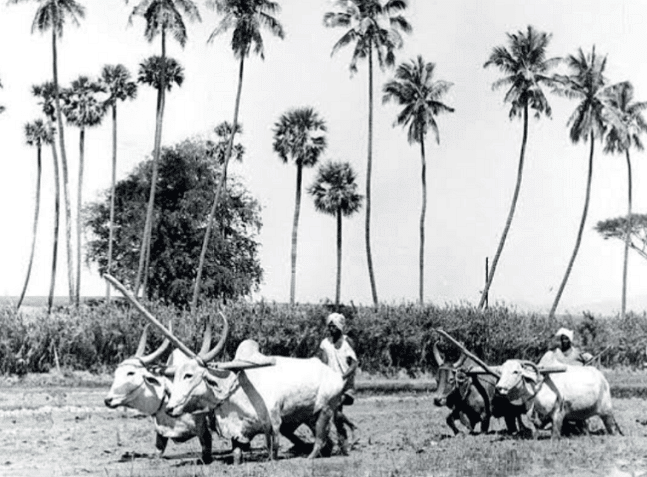Class 10 History Chapter 2 Question Answers - India and the Contemporary World - II
Q1: Who financed the defense expenditure of World War I?
Ans: War was financed by war loans and increasing taxes. Customs duties were raised and income tax was introduced.
Q2: Why were people in rural areas angry with Britishers?
Ans: There was forced recruitment of soldiers in rural areas. Crops failed resulting in acute storage of food, accompanied by the influenza epidemic.
Q3: When did Mahatma Gandhi return to India?
Ans: Mahatma Gandhi returned to India in January 1915. He had come back from South Africa.
Q4: What is the meaning of ‘Begar’?
Ans: Begar: Labour that villager was forced to contribute without any payment.
Q5: Name the writer of the novel ‘Anandamath.’
Ans: Bankim Chandra Chattopadhyay.
Q6: Explain the ‘Idea of Satyagraha’.
OR
What is meant by Satyagraha?
Ans: The idea of Satyagraha emphasized the power of truth and the need to search for the truth.\
 SatyagrahaQ7: How can battles be fought with Satyagraha?
SatyagrahaQ7: How can battles be fought with Satyagraha?
Ans: The idea of Satyagraha suggested that if the cause is true if the struggle is against injustice, then physical force is not necessary to fight the oppressor. Without being aggressive, the battle could be won.
Q8: What was the ‘Champaran Movement’?
Ans: It was the first satyagraha movement that took place in 1916, in which Mahatma Gandhi traveled to Champaran to inspire the indigo planters to struggle against the oppressive plantation system.
Q9: Why did Kheda farmers protest against the Britishers?
Ans: Affected by crop failure and a plague epidemic, the peasants of Kheda could not pay the revenue and demanded that revenue collection be released.
 Kheda FarmersQ10: What was the Rowlatt Act of 1919?
Kheda FarmersQ10: What was the Rowlatt Act of 1919?
Ans: It gave the British government enormous powers to repress political activities, and allowed the detention of political prisoners without trial for two years.
Q11: What was Mahatma Gandhi’s reaction to the ‘Rowlatt Act’?
Ans: Mahatma Gandhi wanted non-violent civil disobedience against such unjust laws, which would start with a hartal on the 6th of April.
Q12: How did people react to the Rowlatt Act?
Ans: Rallies were organized in various cities, workers went on strike in railway workshops and shops were closed down. Alarmed by the popular upsurge, the British started arresting the nationalists.
Q13: Why was Martial Law imposed in Amritsar?
Ans: Local leaders were picked up from Amritsar and Mahatma Gandhi was not allowed to enter Delhi. On 10th April, the police in Amritsar fired upon a peaceful procession, provoking widespread attacks on banks, post offices, and railway stations, so Martial Law was imposed.
Q14: Why did General Dyer fire on innocent people gathered peacefully in Jallianwala Bagh?
Ans: His object was, as he declared, to ‘produce a moral effect’ and to create the feeling of terror and awe in the minds of Satyagrahis.
 Jallianwala Bagh MassacreQ15: What did the British do to repress the Rowlatt Satyagrahis?
Jallianwala Bagh MassacreQ15: What did the British do to repress the Rowlatt Satyagrahis?
Ans: Satyagrahis were forced to rub their noses on the ground, crawl on the streets, and do Salam to all Sahibs. People were flogged and villages were bombed.
Q16: Why did Mahatma Gandhi join the Khilafat issue?
Ans: Mahatma Gandhi now felt the need to launch a more broad-based movement in India. But he was certain that no such movement could be organized without bringing the Hindus and Muslims closer together. One way of doing this, he felt, was to take up the Khilafat issue.
Q17: Explain the Khilafat Movement.
Ans: Turkey was defeated in World War I and there were rumors that a harsh peace treaty was going to be imposed on the Ottoman Emperor—the spiritual head of the Islamic world. To defend the Khalifa’s temporal powers, a Khilafat Committee was formed in Bombay.
Q18: Who were the two main leaders of the Khilafat Movement?
Ans: Two young brothers Muhammad Ali and Shaukat Ali started the Khilafat Movement.
Q19: What resolution was passed at the Calcutta session of Congress in September 1920?
Ans: At the Calcutta session of the congress in September 1920, Gandhiji convinced other leaders of the need to start a Non-cooperation Movement in support of Khilafat as well as Swaraj.
Q20: Name the famous book written by Mahatma Gandhi.
Ans: A famous book written by Mahatma Gandhi is ‘Hind Swaraj’.
|
66 videos|614 docs|79 tests
|
FAQs on Class 10 History Chapter 2 Question Answers - India and the Contemporary World - II
| 1. What is nationalism in India? |  |
| 2. How did nationalism in India emerge? |  |
| 3. What were the major objectives of Indian nationalism? |  |
| 4. How did Indian nationalism impact the freedom struggle? |  |
| 5. What were the significant challenges faced by Indian nationalism? |  |






















